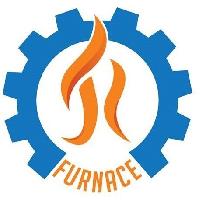Sealed Quench Furnace Price: A Complete Guide to Cost Determinants and Build Configurations

Posted by jrfurnace
from the Business category at
01 Aug 2025 07:16:34 pm.
sealed quench furnace
, often referred to as an SQF, is a sophisticated thermal processing system designed to offer precise atmosphere control, consistent heating, and integrated quenching—all within a sealed, self-contained unit. While performance and specifications often take center stage,
price
is a crucial factor for any capital equipment investment. Understanding what influences the cost of a sealed quench furnace can help in making informed procurement decisions.
Unlike standard heat treatment equipment, the sealed quench furnace is a
highly engineered system
, and its price is determined by a mix of structural, mechanical, electrical, and automation parameters.
Structural Configuration and Size
The
physical dimensions and build size
of the furnace significantly impact the overall cost. Key factors include:
Heating chamber volume
Quenching tank size
Transfer mechanism
Load capacity (in kg or tons)
Larger units with heavy-duty structures require additional steel fabrication, insulation materials, larger drive motors, and extended automation—all of which increase the base price.
For reference:
A compact lab-scale sealed quench furnace can cost significantly less.
A full-scale production system with dual-chamber, high-throughput design will require a much higher investment.
The type of
heating system
used directly affects cost. There are two major variants:
Electric Heating:
Utilizes high-resistance heating elements such as Kanthal or Nichrome. Ideal for precision, clean operation, and faster response times.
Gas/Fuel-Fired Heating:
Includes advanced combustion systems with high-efficiency burners, gas valves, ignition modules, recuperators, or regenerative heat exchangers.
Electric heating systems generally have
lower upfront costs
but may incur higher operating costs depending on power tariffs. Conversely, gas-fired systems might involve
higher installation costs
due to combustion safety systems but may prove more economical over time in high-consumption environments.
Atmosphere Control Equipment
The sealed nature of this furnace requires a
gas-tight enclosure
and a full suite of
atmosphere management equipment
, which directly impacts pricing. These include:
Gas mixing systems
Flow control valves and panels
Oxygen probes
Carbon potential sensors
Dew point control units
Safety relief valves and sealing systems
Fully automated gas control systems add to the capital cost but ensure tighter tolerances and energy efficiency.
Quenching System Design
The
quench chamber
is built adjacent to the heating chamber and can include:
Oil quenching tanks
Water or polymer quench options
Air or gas quenching fans
Agitation and cooling coil systems
Heat exchangers and filters
The
choice of quenching medium
and the complexity of the system (including agitation, filtration, and automation) are significant contributors to price variation.
Simple quench tanks without agitation systems are more affordable, whereas high-efficiency, temperature-controlled, filtered quenching systems carry a higher price tag.
Automation and Controls
Modern sealed quench furnaces come with a range of control options:
Basic temperature controllers with timers
PLC-based systems with touch-screen HMIs
SCADA software for remote monitoring and data logging
Interlocks, alarms, auto diagnostics, and data storage
The inclusion of
multi-zone control
,
safety interlocks
, and
cycle monitoring
can raise costs but also improves process consistency and compliance.
Insulation and Thermal Efficiency
Insulation plays a vital role in long-term operating costs. Typical insulation elements include:
Ceramic fiber modules
High-alumina refractory linings
Multi-layer composite insulation
Premium insulation not only improves thermal stability but also reduces power consumption and increases lining life—justifying a higher initial cost.
Typical Price Ranges (Indicative)
While sealed quench furnace price vary depending on specifications, here are some indicative figures:
Small-scale sealed quench furnace
(manual or semi-auto, electric heated): ₹10–25 Lakhs
Mid-size automated sealed quench furnace
(with gas atmosphere and oil quench): ₹35–75 Lakhs
Large-scale production sealed quench systems
(fully automated with dual chambers and SCADA): ₹1 Crore and above
Customizations, location-specific compliance, import duties (if sourced internationally), and after-sales service agreements may further influence the final cost.
Conclusion
The price of a
sealed quench furnace
is a function of multiple variables—ranging from structural size and heating type to control system complexity and insulation quality. Rather than a one-size-fits-all figure, the cost is best understood as an investment tailored to specific thermal processing goals, operational preferences, and future scalability.
When evaluating quotations, it's essential to compare not just the price but also the engineering quality, component sourcing, warranty, and service support. A well-built sealed quench furnace, though a substantial initial investment, offers durability, efficiency, and process consistency that can pay off over its operational lifespan.
0 Comments



